Stanely
Mushava, Literature Today, The Herald
Book: Textures
Authors: John Eppel & Togara Muzanenhamo
Publishers: amaBooks (2014)
ISBN: 978-0-7974-9498-5
When the muses refuse to smile on a poet, he runs out of inspiration but when a woman refuses to smile on him, a creative current carries him along. If not for this irony of deprivation, Dante, John Keats and Thomas Hardy may never have attained half their stature, and poetry would have been poorer for the equilibrium. John Eppel’s impassioned reminisces for lost love in “Textures” make for a Zimbabwean version of the deprivation theory.
Book: Textures
Authors: John Eppel & Togara Muzanenhamo
Publishers: amaBooks (2014)
ISBN: 978-0-7974-9498-5
When the muses refuse to smile on a poet, he runs out of inspiration but when a woman refuses to smile on him, a creative current carries him along. If not for this irony of deprivation, Dante, John Keats and Thomas Hardy may never have attained half their stature, and poetry would have been poorer for the equilibrium. John Eppel’s impassioned reminisces for lost love in “Textures” make for a Zimbabwean version of the deprivation theory.
“Textures”,
the dual effort by highly regarded poets Togara Muzanenhamo and John Eppel, is a
league apart for its classical forms, musical cadences and cosmopolitan depth
of field.
Zimbabwean
poetry, often politically themed, thrives on immediacy, rejects classical
forms, branding them synonymous with colonial tradition, utilises the canon of
cultural decolonisation and is almost uniformly set to free verse.
Muzanenhamo
and Eppel’s joint anthology is an apparent revolt against the post-colonial
canon and fares exceptionally as a new aesthetic school.
As
if to confirm John Keats’s wager: “The poetry of the earth is never dead,”
“Textures” won the National Arts Merit Award (Nama)’s main literary accolade
this year, the second consecutive time a poetry collection has landed the
honour.
With
poetic thoroughbreds like David Mungoshi and Emmanuel Sigauke hunched over
their keyboards this year, poetry may be bound for a third consecutive honour
in the previously prose-dominated category.
Eppel’s
Bulawayo sequence is set to sonnets, odes, sestinas, villanelles and Romantic
references, while Muzanenhamo employs modernist frame and a cosmopolitan depth
of field.
Irony
of history, loss of love, sense of mortality, appreciation of beauty,
invocation of forgotten feats line and the debilitating trail of war line the
thematic taskbar of the two poets for the most part.
The
trouble with the anthology, however, is the poems are often densely pixilated
and cryptic to a fault.
While
both poets ably set forth their scenes and provide the musical ambience, their
ideas are sometimes buried in the aesthetics.
On
first reading, the meaning flies over your head, on second attempt the jigsaws
seem to come together, third time you want to be sure you got it right, and so
forth.
If
this is a flaw, though, then it has its side benefits. It makes the anthology
more durable than the immediate ones which the reader stacks away after reading
them once because there is nothing deeper.
With
this anthology, after gleaning the alluvial nuggets in the beautifully
structured stanzas, you have a conviction that what you see is not all there is
to know and you keep coming back for more.
The
esoteric tendencies of Muzanenhamo and Eppel are perhaps the occupational
hazard of being too style-conscious.
In
an interview with Drew Shaw, then a lecturer at NUST, Eppel explains the
paradox faced by lyric poets “where they actually want to get rid of words, but
the only way they can get rid of words is by using words. So there’s this
movement from sense to dominating to sound dominating.”
That
could explain how the reader can resonate with the flow and the scenery but
still not come away wiser for the exercise.
Sometimes,
especially in Muzanenhamo’s case, you feel that imagist economy could have
worked neater but potency of diction eventually carries the day.
Texture
is generally defined as the feel, appearance, or constancy of a surface or a
substance but has different renderings in music, visual art and textiles.
“Both
poets considered musical metaphors for the title of this collection but chose
the more visual name ‘Textures’, which is appropriate, Eppel said, ‘because the
word text is from the Latin texere, which basically means to weave hence the
word textile… and the idea of the woof and the warp is appropriate for poets
who are interweaving their texts in one book’,” Shaw relates.
Some
of Eppel’s poems are double-layered where you have a visual sequence preceding
a personal emotion.
And
because “none throws away the apple for the core”, as John Bunyan said, each
layer is meticulously attended sensory stimuli retaining appeal to the point of
emotional disclosure.
The
opening poem, for example, sets out a suburban setting, lonely but for the
routine ambience of nature, in the first stanza. The second stanza, switched to
another rhyme scheme, seems to recall lost love and the departed companion is
imagined “smiling at him the way you smiled at me”.
“Only
Jacarandas” seems to give a nod to the resilience of natural beauty; whereas
displays are set for other forms to shine, “jacarandas/ can take their
reflection/ from the dull sky of tarmac”.
The
elderly poet is at it again in his sonnet sequence, “The Hillside Dams in
Bulawayo,” reminiscing about lost love with more “you sections”.
One
recalls Hardy (I gather some place that he is Eppel’s favourite poet) in his
futile quest for Emma and the beautiful poetry occasioned, among listless
sceneries, by his recollections of the “woman much-missed”.
The
third entry in “Four Villanelles” and third poem, “Looking for You”, also seems
to recall his Beatrice, Emma or Fanny, although the poet’s esoteric tendency
does not allow for solid grounds.
The
first villanelle on man’s conquest of woman has a political drift. “Davids are
Goliaths in waiting/the corrupting effect of power/it’s a maxim worth
restating”, the poet observes.
“In
Beauty is Truth, Truth Death”, the poet reflects of the brevity of beauty, its
subservience to the cycle of seasons, and in that thread, invokes a sense of
mortality.
“Appropriating
the Land”, a colonial reconstruction satirises a minority dispensation closer
to nature than to the people, hence “bossy warnings/with words like ‘forbidden’
/ and ‘only…’”
Suburban
Eppel only ever gets out of Bulawayo with the poem “Dorothy Recollects”, a
reconstruction of the Romantic poets William Wordsworth and Samuel Coleridge.
By
contrast, young Muzanenhamo is cosmopolitan, globalist and modernist. His
settings are as varied as USA, UK, Norway, France, Peru, Mozambique, Somalia and
Zimbabwe, almost as an afterthought.
Muzanenhamo
articulates the universality of human experience and the transcendence of
literature, a view also espoused by Dambudzo Marechera and Wole Soyinka.
“It
fascinates how similar people are,” Muzanenhamo says in an interview with Dr
Shaw. “You go to any country and find that we all possess the same emotions; we
speak different languages, and there’s a different landscape, but the baseline
of all humanity strums at the same rhythm.”
“Gondershe”,
a poem about a child soldier surrounded by his dead comrades on a Somalian
beach, himself waiting to die is a forceful indictment on war.
“Having
never fired a gun before, he held the rifle/as though the weapon were a dying
child about to say something/ only they could share… Come dawn there would be
no escape/He would die. Even the sea would burn,” Muzanenhamo relates.
“Zvita”,
an anatomy of death, is singularly unsettling. Whereas December is the cropping
season, synonymous with new life, Muzanenhamo appropriates the last month as a
symbol of the end of life.
In
“Mercantile Rain”, Muzanenhamo reconstructs the vagaries of war. Through a war
that came with “loud with every death, dark with every monstrous fear”, a
surviving soldier will never get over the loss his wife and family.
Unfortunately,
Muzanenhamo occasionally comes across as gross, sometimes too enigmatic. But he
has already staked his claim as one of the most sophisticated Zimbabwean poets
writing today.




















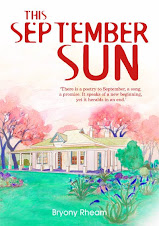.jpg)



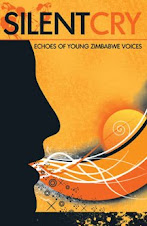
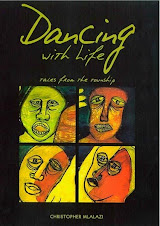

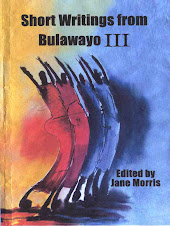


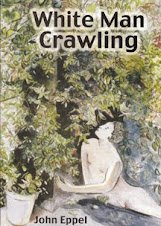










.jpg)





















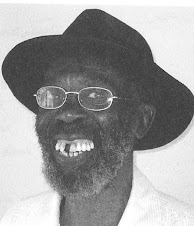






No comments:
Post a Comment